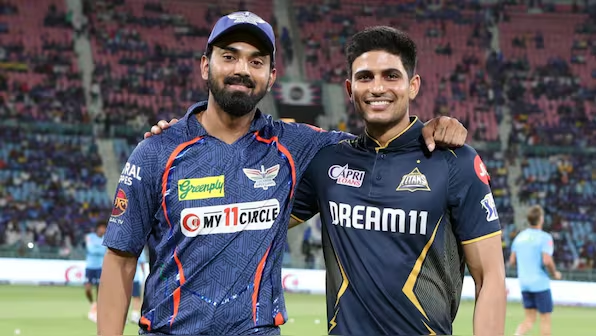As IPL 2025 reaches its final league week, Gujarat Titans and Lucknow Super Giants remain two of the most strategically nuanced franchises in contention. Both teams boast depth across departments and a clear game plan, but their results and execution have revealed key differences. This comparative team analysis explores how GT and LSG are shaping their playoff journeys and what sets them apart.
Gujarat Titans (GT) – IPL 2025 Performance Analysis
Current Position: 3rd
Points: 14 from 10 matches
Net Run Rate: +0.885
Recent Highlight: Clinical win over Delhi Capitals, powered by Sai Sudharsan’s half-century
Gujarat Titans continue to reflect the tactical stability that saw them win the title in their debut season. Though not as dominant as in 2022, their ability to win tight games and adapt to different pitch conditions makes them one of the most balanced sides in the competition.
Strengths
- Top Order Consistency: Sai Sudharsan is leading the Orange Cap race with 500+ runs, while Shubman Gill is playing the ideal anchor.
- Middle-Overs Control: The spin duo of Rashid Khan and Rahul Tewatia ensures containment through overs 7–15.
- Situational Bowling: Mohit Sharma and Noor Ahmad provide critical breakthroughs when it matters, especially in the second half of innings.
Weaknesses
- Rashid Khan’s Dip in Wicket-Taking: Though economical, Rashid has only taken seven wickets in ten games, impacting GT’s penetration in middle overs.
- Lower-Order Strike Rate: GT have occasionally struggled to accelerate after the 15th over, especially if early wickets fall.
Lucknow Super Giants (LSG) – IPL 2025 Performance Analysis
Current Position: 5th
Points: 12 from 11 matches
Net Run Rate: +0.196
Recent Highlight: Last-ball win against Sunrisers Hyderabad, led by Marcus Stoinis’ 60*
Lucknow Super Giants continue to evolve as a flexible, matchup-driven franchise. With solid all-rounders and power-hitters across the lineup, LSG have focused on exploiting opposition weaknesses rather than enforcing a single style of play.
Strengths
- All-Round Core: Marcus Stoinis, Deepak Hooda, and Krunal Pandya offer balance, giving flexibility in batting depth and bowling options.
- Explosive Finishers: Nicholas Pooran and Ayush Badoni have won matches single-handedly with 150+ strike rate cameos.
- Varied Bowling Attack: Ravi Bishnoi’s control, Mark Wood’s pace, and Mohsin Khan’s swing give LSG the tools for any pitch type.
Weaknesses
- KL Rahul’s Inconsistent Strike Rate: Rahul’s low gear starts in powerplays have put pressure on the middle order in multiple matches.
- Unsettled Opening Combination: Frequent changes at the top have cost LSG early momentum in several matches.
GT vs LSG – Side-by-Side Metrics
| Key Metric | Gujarat Titans (GT) | Lucknow Super Giants (LSG) |
|---|---|---|
| Top Run Scorer | Sai Sudharsan (504 runs @ 143 SR) | Marcus Stoinis (345 runs @ 142 SR) |
| Most Wickets | Mohit Sharma (14 wickets) | Ravi Bishnoi (13 wickets) |
| Powerplay Avg Score | 53/1 | 47/2 |
| Death Overs Strike Rate | 168.2 | 181.4 |
| Win % in Close Games (<10 runs or 1 over) | 75% | 60% |
| Win % Batting First | 66% | 50% |
Final Verdict: GT’s Structure vs LSG’s Flexibility
Gujarat Titans offer a more settled playing XI, consistent top-order form, and experienced handling of pressure. Their ability to build innings and defend par totals makes them well-suited for playoff conditions.
Lucknow Super Giants, on the other hand, bring unpredictability. Their strength lies in depth, versatility, and the X-factor performances of players like Pooran and Stoinis. However, inconsistency in their top order and tactical overthinking can sometimes cost them games they should win.
If both teams qualify, GT may hold the upper hand in high-pressure knockout matches due to their structured and proven big-match approach. LSG will need one standout performance in each playoff match to truly compete.











